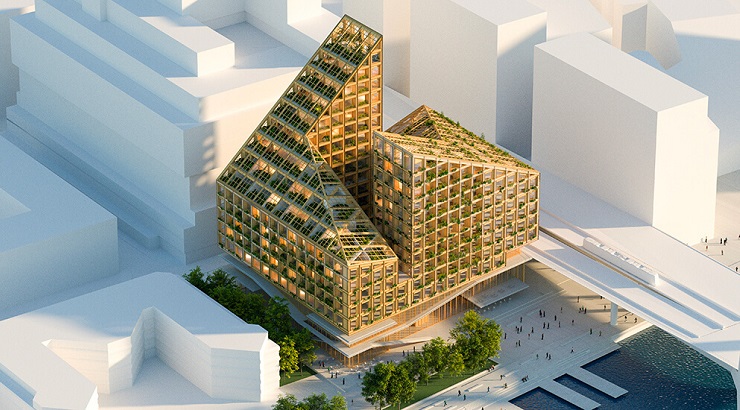Features
6 Principles of Sustainable Architecture
Everything to know about sustainable architecture.

Sustainable architecture is a form of architecture that seeks to minimize the adverse environmental effects of buildings through efficient use of materials and systems.
Although the definition of sustainable architecture keeps changing, the National Institute of Building Sciences outlines the six principles of sustainable building design as follows: –
1. Construction Site Enhancement
Site design should integrate with sustainable architecture to realise a sustainable building. This begins with a careful selection of a construction site in the case of a new building.
The site location and positioning of a building have a direct effect on the energy requirements, local ecosystems, and other important features of the structure.
Ideally, sustainable architecture should strive to reduce, manage, and treat stormwater runoff and, if possible, to support natural flora and fauna of the region.
2. Efficient Use of Building Materials
Sustainable architecture design should seek to create a building that can use and reuse materials in the most efficient and sustainable way during its entire life cycle.
The use of sustainable architecture materials has been credited with reduction of adverse effects such as global warming, toxicity, and depletion of natural resources.
Efficient use of building materials can also contribute to improved construction site safety while reducing liabilities and construction waste disposal costs.
3. Indoor Environmental Quality
The indoor environmental quality (IEQ) of a building affects the overall comfort, productivity and health of the occupants.
As such, sustainable architecture strategies focus on creating buildings with enhanced acoustic performance, and those that maximize daylighting while avoiding usage of materials that emit high VOCs.
4. Optimization of Energy Use
Sustainable architecture is a great proponent of net zero energy buildings.
These are structures that generate own electricity – mainly through solar and wind – thus cutting the reliance on fossil fuel-driven electricity that emits tons of carbon.
5. Conservation of Water
Freshwater is becoming a scarce resource across the world. Sustainable architecture is helping the situation by designing buildings that use water more efficiently.
Besides, sustainable architecture is also promoting the practise of recycling water both during construction and post-construction stages of the building.
RELATED: How to Build More Sustainable Cities
Through greywater plumbing systems, for example, facility managers are able to collect and process wastewater – except that from toilet streams – for reuse within the property.
6. Enhancement of Operations and Maintenance
As more tenants seek for modern buildings, landlords are increasingly renovating their structures to make them attractive to renters.
Such renovations have adverse effects on the environment.
To avoid the need for frequent renovations, sustainable architecture is helping builders to use systems and materials that simplify operations while reducing maintenance needs.
This helps to reduce water and energy requirements of a building while minimizing the emission of toxic chemicals. It also reduces the life cycle costs of a building.












